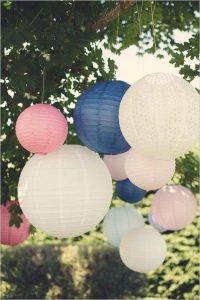How many times in your life have you been asked your favorite color? Probably an innumerable number of times. As a child you may have been asked that question more frequently than any other. It seems like such an insignificant question, doesn’t it? (I feel really stupid when I ask little kids what their favorite color is, as if the child doesn’t deserve the respect of a real substantial question). What does it matter in the grand scheme of life what someone’s favorite color is? I think color does matter, I think it matters more than we realize. We take color for granted. I think color can save lives, change lives, and form dreams.
In The Color Answer Book by Leatrice Eiseman, a world leading color expert, She suggests that colors and color preferences are determined by geography and psychology.
In one excerpt, Eiseman argues that some color preferences are class associated. In other words, you will gravitate toward certain colors depending on your socio-economic status. Historically, only the rich could afford richly colored robes, because dyes were expensive, people associated color with wealth. The poor and lower class citizens would wear plain linens in undyed whites and beiges, because they could not afford dyes. This is how purple became the color associated with royalty. The purple dye came from sea snails in the Muricidae family. They were a rare commodity and so only royalty could afford the rich purple dye.
Eiseman noticed that the color pendulum shifted about the same time as industrial revolution. When dyes and colorful clothing became abundant, lower classes could afford colorful clothing at reasonable prices, the upper classes began wearing blacks, grays, whites, and beige. They began wearing muted tones to, once again, distinguish themselves. Brightly colored goods began to be associated with the lower classes.
It wasn’t until fashion designers began using brighter colors that color became destigmatized again, designers like Versace, Hermes, Carolina Herrera, and Oscar De La Renta.
Today, quality determines class distinction in goods, not color, Eiseman argues. A pair of orange polyester pants might be considered cheap, but if a designer crafts orange velvet pants and pairs it with a silk blouse, suddenly it is high quality and fashionable. While color might not be the determining factor in class distinction any longer, I still think that color preferences are experientially reinforced.
As a child my favorite colors were blue, pink, and white. They made me think of my birthday. I remember all of the fabulous birthday parties my mom threw for me, the birthday cakes, the party games, and the blue, pink, and white balloons and streamers. Blue and pink are no longer my favorite colors because I don’t value birthdays as must as perhaps I once did (still love birthday parties and presents. I wouldn’t want you to be discouraged from ever throwing me a party or giving me a gift <3).
Now, I value other colors for different reasons and for different applications. Everything was pink blue and white as a child. Now I know that different colors serve different purposes in different contexts. And I’ve learned that pink, blue, and white really isn’t the best color combination for anything based on applied color theory (unless you’re throwing a gender reveal party, in which case, blue, pink, and white win!).
From childhood to the present day I still have a strong aversion to the color red. I avoid the color like the plague. You will not find the color red in my wardrobe or home décor. I think it is because I hated cherry flavor cough syrup (I had to drink a ton of that stuff as a kid), and it was bright red. Which is yet another example of experiential color reinforcement, or in this case a deterrent.
I’m enjoying my psychological look at color theory. More on color theory later, but for now, let me know what your favorite colors are, and can you tell me why they are your favorite colors? Tell me in the comments!




Comments
Love this article. How interesting. I hope you will delve into what the colors we like tell us about ourselves. I have to say seafoam green is my favorite color. Like that found in the ocean. When I see that color in my mind I am taking to sea breezes and I breathe in a deep yoga-like breathe and feel peace all over. What does that mean?
Black used to be my favorite color growing up (although I know now that it technically isn’t a color, but rather the absence of light). I chose black because I believed it to be the “master” or “king” of all the other colors, the most powerful color (weird, I know). But that soon changed when I found no particular aesthetic appeal in black (although, ask anybody, I wear black more than any other “color”). Since the age of 13, or thereabouts, blue has been my favorite color. Blue means life to me, and the sea and wildness. It means venturing on wilder seas, exploring the unknown depths of the ocean (or life), it’s refreshing and hopeful, but strong and daring. Blue is very much a “me” color. And while I still really love other colors, and have come to appreciate them for their various meanings and purposes (especially in art), blue shall remain my favorite of them all. And it seems brown is the only color I don’t really like, but then it depends on the shade of brown.
Thank you so much for sharing Christy! I enjoy reading all your posts.
🙂 I love black too!
Hahaha, I fell in love with your paintings a few days ago when I saw boxes luxbindery account on Instagram. I paint (terribly) and do a little bit of calligraphy but mainly I’m a wedding photographer based in California and I was laughing here coz the photo you used about the colors you love (what attracted me to your work) is a photo I’ve taken at a wedding in France a couple years ago 😀 random sign that I had to say hello <3 all the best to you!